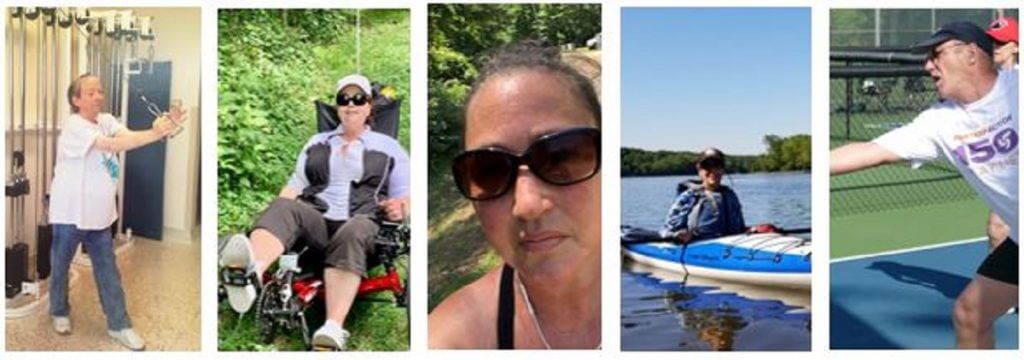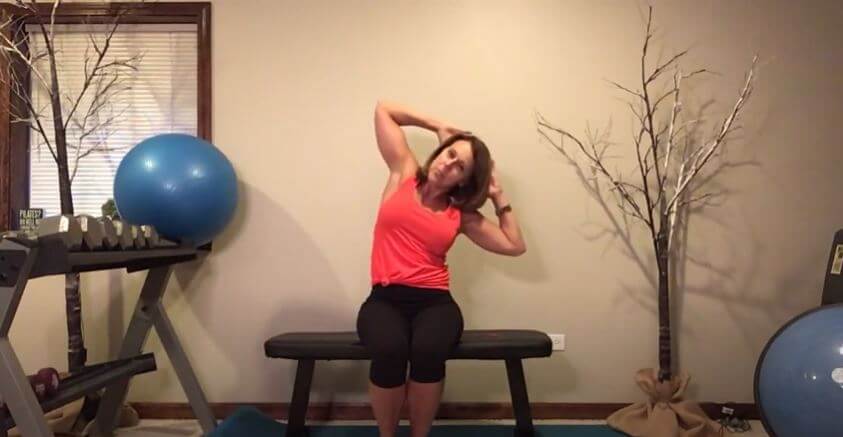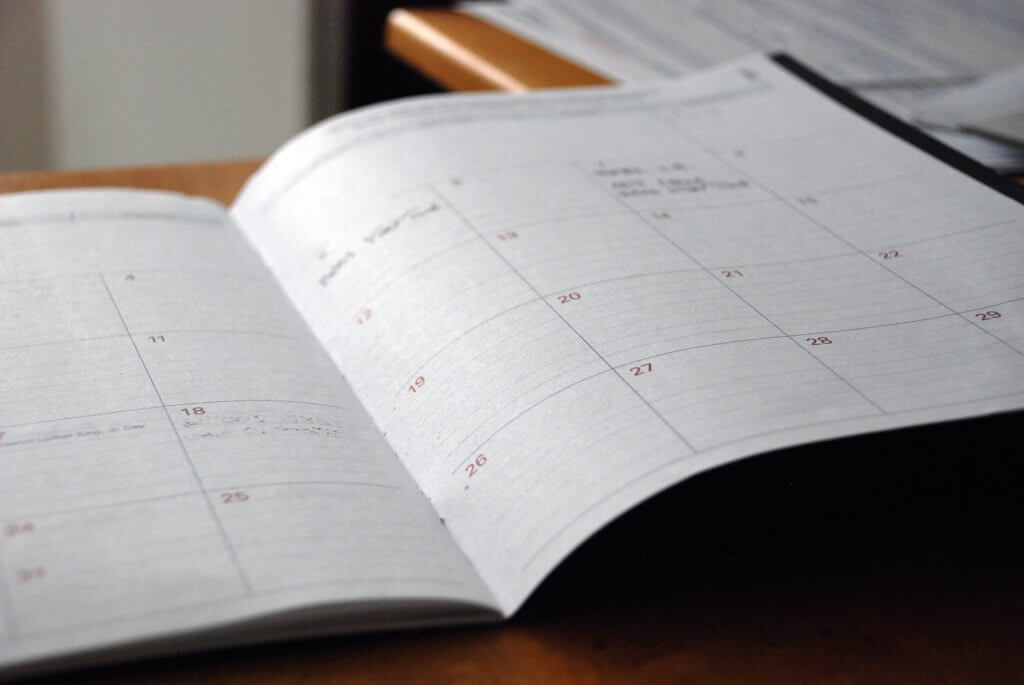
Left: Julie Hossack; Right: Julie Rowin, MD
Recap: Conquer MG Webinar – June 28, 2020
Recently, panelists Julie Rowin, MD, and Julie Hossack discussed the power and possibility of exercise for those who have myasthenia gravis. Dr. Rowin is board certified in neurology, neuromuscular medicine, integrative medicine, and acupuncture. Ms. Hossack is an A.C.E Certified Personal Trainer, ISSN Certified Nutrition Coach and Peak Pilates certified Pilates Instructor.
See their discussion (40 min, including 20 min exercise demonstration).
See Julie Hossack’s exercise demonstration (20 min).
Dr. Rowin and Ms. Hossack answer your MG-related exercise questions in the Myasthenia Gravis Exercise Group on Facebook
Print out this short and handy guide to Start Your Exercise Routine.

Let’s talk about MG and exercise – at last!
Dr. Rowin: It’s exciting for the MG community that’s we’re starting to talk about exercise. For a long time the message was to conserve energy, to avoid exacerbating your weakness or fatigue.
We’ve come to recognize that exercise can benefit those who have myasthenia. It’s good for the immune system, it combats fatigue. Exercise helps gut health, mental clarity, sleep, and mood. It can help to counteract side effects if you’re on prednisone; for instance, exercise can help with weight control, as well as blood pressure and blood sugar management.
Please keep in mind this is not intended to be a substitute for professional medical advice. If you’re having shortness of breath or swallowing difficulties with any exertion, now is not the time to start an exercise routine. In this case, contact your neurologist.
However, it’s been my experience that many people who have myasthenia become stable with treatment. Although there are normal fluctuations with MG and every day is different, if your MG is stable then exercise can be part of your recovery process.

Biggest Concern
Dr. Rowin: People who have MG want to get moving again. But there is fear and concern that exercise will make the weakness and fatigue worse. How do you respond to that?
Julie H: You may not think of it this way, but movement that you do in your everyday life is exercise. Every time you sit up to get out of bed you are working your abs. Every time you stand up to get out of a chair you’re using your quads. I hope to help you discover that if you put some planning and goals around those movements, you can slowly progress. That way you can add more activity into your life.
Dr. Rowin: You’re saying that exercise doesn’t have to be something that’s high intensity, or that leaves you exhausted. You can think of it as building on what you do every day.
Julie H: Yes. I’ll add that it should be structured, and thoughtful with a purpose. I put together a small routine that takes about 15 minutes. It’s intended for someone new to exercise, or coming back to exercise after a break or an illness. It will be useful if you’re wondering how to get started.
Some parts of the exercise video might be too challenging, while some might not be challenging enough. Try to stick with it from being to end. I would welcome hearing from you afterwards through the Myasthenia Gravis and Exercise Group we’ve set up on Facebook. Let me know if I can help you adjust this program so it’s something that works for you and your body – and it’s something you can stick with. Finally, try to find something with this workout that you’re proud of, happy about, something that you feel you can do. It can even be hey, I’m taking a step. Whatever it is, keep track of it.
Dr. Rowin: In other words, keep track on paper how much you can do. Don’t feel bad if you couldn’t do a particular exercise. Next week you might be able to do one repetition, then two, then more. Julie, I noticed you gave a lot of modifications. That’s really helpful so a person can take it up or down a notch.

What’s too much?
Dr. Rowin: We received a number of questions that address the same concern: How do I know what’s enough? What’s too much?
Julie H: I suggest you recognize what your body is able to accomplish today. Follow along with the video, and write down how many of each exercise you can do. Write it on a calendar or date it in a notebook. Tomorrow try to do same thing. Pay attention to how your body felt, and write that down, also. Once you get up to doing about 10 repetitions, it’s time to move on. Adjust the program, but make sure you start with what feels pretty easy today. Increase your repetitions or add resistance as you go forward.
Muscle soreness or MG fatigue?
Dr. Rowin: Another frequent question is this: “How do I know whether I’m having muscle soreness from the workout, or fatigue from MG?”
Julie H: That’s a little tougher to answer. It is very normal to have muscle soreness. It almost feels like having a bruise in your muscle up to one or two days after doing an exercise. That’s normal. Keep track of that feeling to see whether it subsides over time as you get more conditioned; this will help you know whether you’ve set your goals appropriately.
Dr. Rowin: If you’re weak the day after exercise, and it’s not muscle soreness but power loss, then you need to take it down a notch. I’m asked, “How do I know before I get to that point?” Just start by doing what you know is ok. There is plenty of time to add repetitions or make the exercise more difficult. We’re in this for the long haul.
Julie H: We’re building stamina and strength for the future. You don’t need to – and won’t – accomplish that in one day. Give yourself time, regardless of what your big goal is.
Dr. Rowin: I see people overdo, and then never exercise again because they feel terrible. Or they don’t try because it’s scary or difficult. I agree, it’s not easy – especially when you have myasthenia. But the rewards in the long run make it more than worth your while.

Does age affect my ability to exercise?
Julie H: Age absolutely factors into your ability to exercise. Is there time to improve? Yes. Start with what you know you can do. If you feel your back isn’t giving you the strength you need, then start with a safe position that offers support, and aim for a low level of intensity. Regardless of age, you should still see progress.
Will exercise increase my strength and muscle mass even though I have MG?
Dr. Rowin: Yes, it will. Of course it depends on the severity of your condition. But again, start slowly and gradually and you’ll make progress.
Will exercise increase my energy levels?
Dr. Rowin: Fatigue is a major issue with myasthenia, and this is one reason why exercise is so important. It often happens with MG that you get treated and improve, and your strength is better. But the fatigue lingers and just doesn’t improve. Your doctor may look for other causes. One of the biggest culprits is being sedentary. Deconditioning leads to fatigue. Moving will increase your energy levels.

What about golf (or yoga or tai chi or…)?
Julie H: Several people asked about specific sports. Running, weight lifting, golf, tai chi…If there is something you loved to do that’s been put on the back burner, I highly recommend that you work toward that goal. It’s helpful emotionally. Start doing the motions that are specific to that sport. If you want to play golf, start by seeing how that swing feels in your house, then maybe take it to the range. Work on a progression – don’t try to golf 18 holes right away while carrying your bag.
The same is true with running. Start by running a block then walking a block. Record how you feel as you progress. Tai chi, yoga, stretching… tell the instructor that you’re going to stay for 10 minutes to try it out. Try it for a couple weeks, then maybe stay for 15 minutes. Don’t cross anything emphatically off the list until you try to progress back to the activity that you love.
Are there exercises for ptosis (drooping eyelids)?
Dr. Rowin: There are no specific exercises to help ptosis. It generally improves as the condition improves for the majority of patients.
Is it dangerous to over-exercise?
Dr. Rowin: If you’re in an exacerbation, it’s not a good idea to exercise. If you’re stable, then it’s helpful to gradually introduce exercise. Use your common sense and be safe about it.

Any advice to committing to exercise every day?
Julie H: I suggest you write your exercise plan on your calendar. Start with whatever you feel is a good number of repetitions. Check the days off, or use smiley face stickers. That feedback of physically checking something off a list is very rewarding. Achieving a goal that you’ve worked up to over time will get you to a point where you can exercise more often.
We’ve talked about setting goals, and being accountable. One other thing that can help you commit to exercise on a more regular basis is having a support network. You could work out with a friend virtually on Zoom. You can find encouragement through the Facebook page that we mentioned. I hope you thought of something you are proud of – feel free to share that with the FB group, and with your friends and family. Getting that positive feedback will help you stick with exercise on a regular basis.



